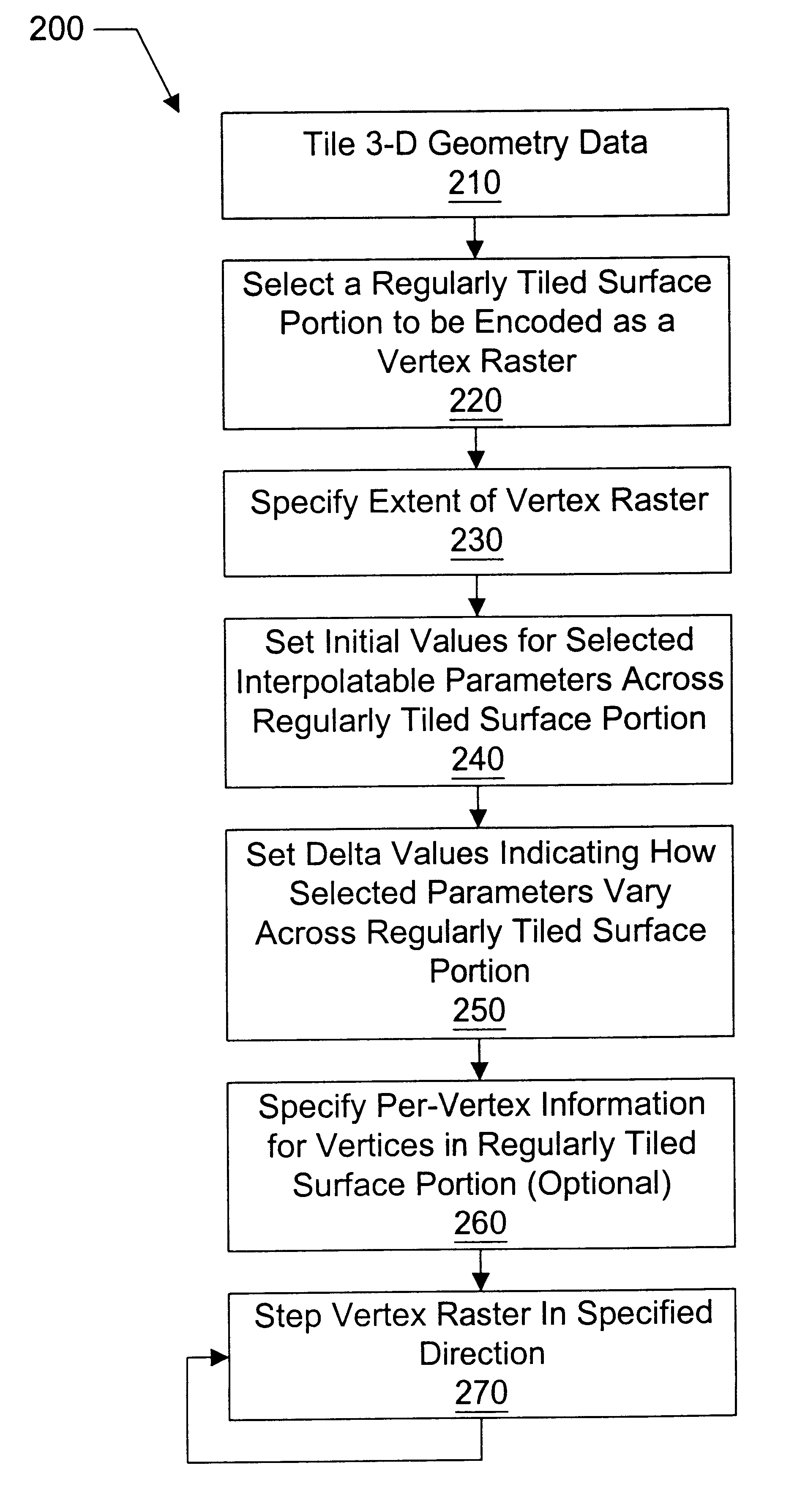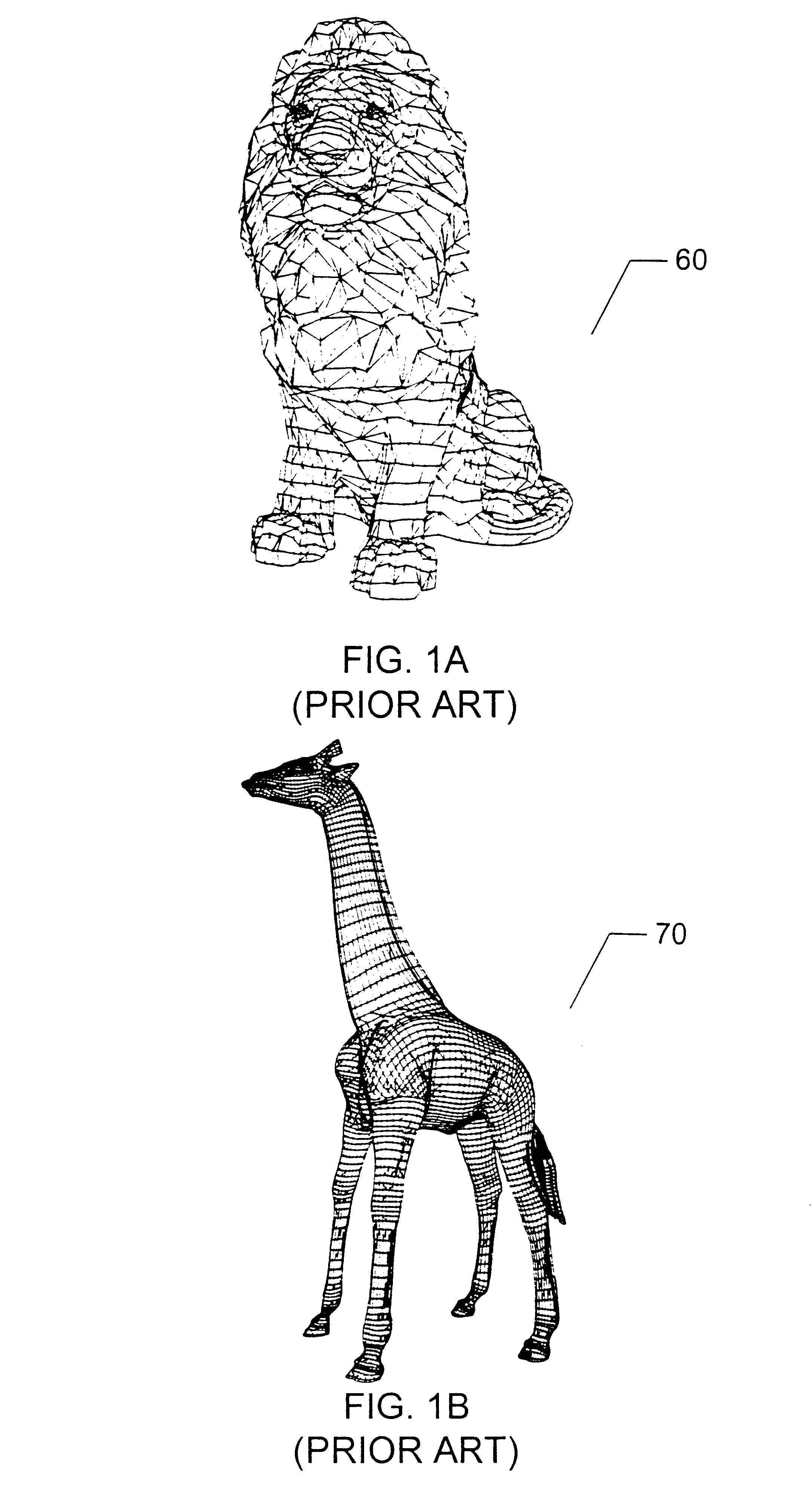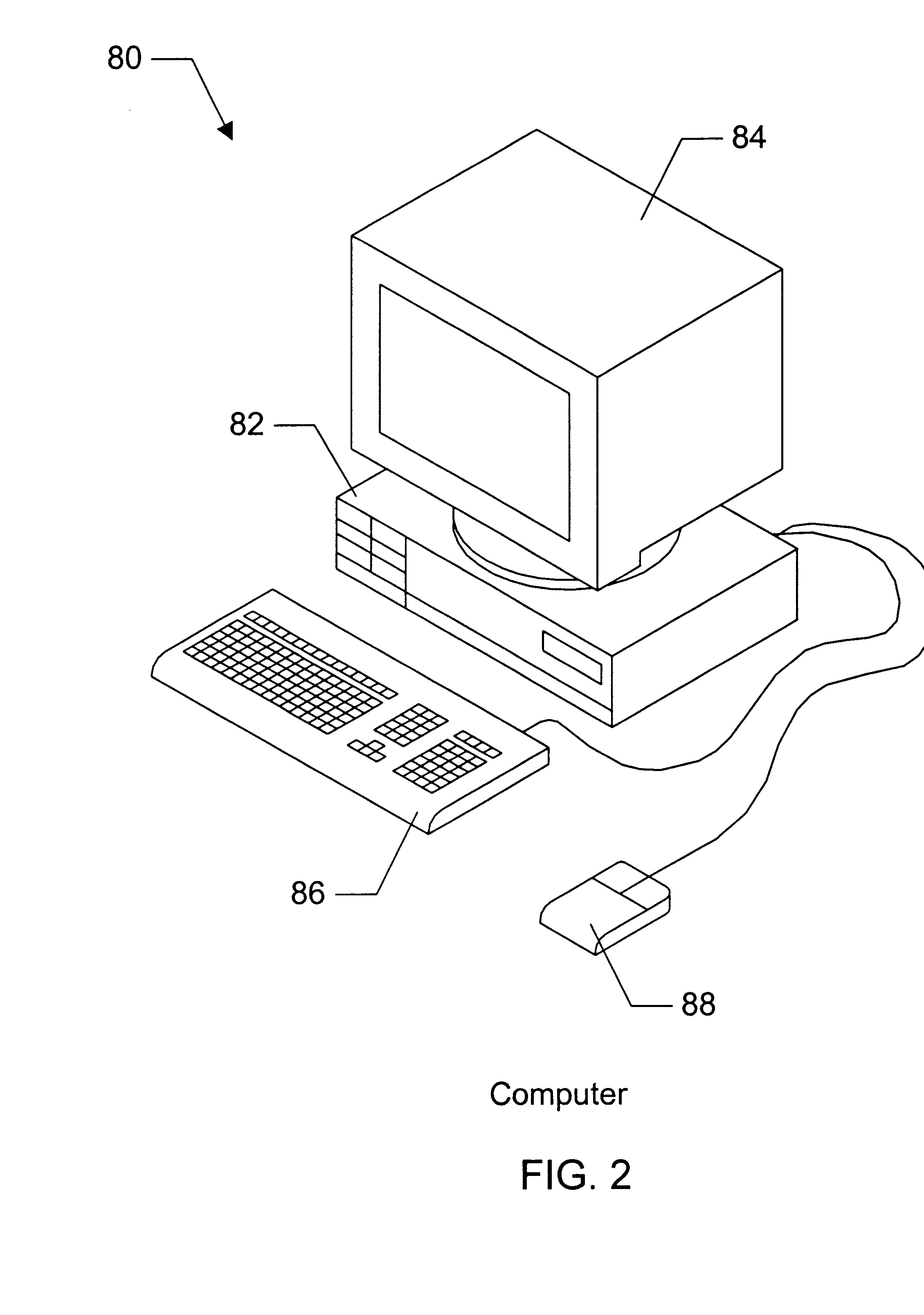Compression of three-dimensional geometry data representing a regularly tiled surface portion of a graphical object
a three-dimensional geometry and graphical object technology, applied in the field of three-dimensional (3d) computer graphics systems, can solve the problems of compromising system performance, increasing bottlenecks, and increasing complexity of graphics application programs,
- Summary
- Abstract
- Description
- Claims
- Application Information
AI Technical Summary
Problems solved by technology
Method used
Image
Examples
Embodiment Construction
Incorporation by Reference
Co-pending U.S. application Ser. No. 08 / 511,294, filed Aug. 4, 1995, entitled "Method and Apparatus for Geometric Compression of Three-Dimensional Graphics Data", and assigned to the assignee of this application, is hereby incorporated by reference as though fully and completely set forth herein.
Co-pending U.S. application entitled "Method of Producing a Sequence of Triangles From a Vertex Raster With and Without Half Resolution Edges While Decompressing a Compressed Geometry Stream", filed Jan. 15, 1998 by Jeffrey M. Chan, is hereby incorporated by reference and though fully and completely set forth herein.
FIG. 2--Computer System
Referring now to FIG. 2, a computer system 80 is depicted which includes three-dimensional geometry compression and / or decompression capabilities according to one embodiment of the present invention. As shown, the computer system 80 comprises a system unit 82 and a video monitor or display device 84 coupled to the system unit 82. V...
PUM
 Login to View More
Login to View More Abstract
Description
Claims
Application Information
 Login to View More
Login to View More - R&D
- Intellectual Property
- Life Sciences
- Materials
- Tech Scout
- Unparalleled Data Quality
- Higher Quality Content
- 60% Fewer Hallucinations
Browse by: Latest US Patents, China's latest patents, Technical Efficacy Thesaurus, Application Domain, Technology Topic, Popular Technical Reports.
© 2025 PatSnap. All rights reserved.Legal|Privacy policy|Modern Slavery Act Transparency Statement|Sitemap|About US| Contact US: help@patsnap.com



